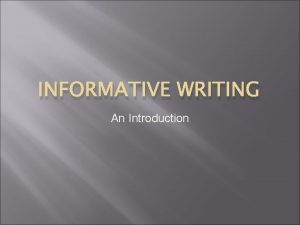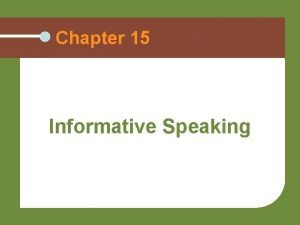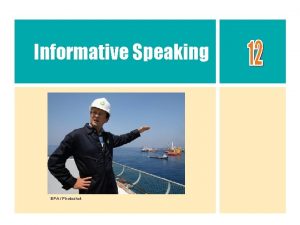CSCM type test Informative presentation of the CSCM




















- Slides: 20

CSCM type test Informative presentation of the CSCM type test results Gerard Willering TE-MSC 16 -05 -2013 CSCM team Bernhard Auchmann, Krzysztof Brodzinski, Zinour Charifoulline, Howard Pfeffer, Vincent Roger, Ivan Romera Ramirez, Scott Rowan, Jens Steckert, Hugues Thiesen, Arjan Verweij, Gerard Willering, Daniel Wollmann, Markus Zerlauth. Major investment in this test since 2011 by many

Outline • • Test Goals Test parameters and conditions • • • Results • • • Test sequence Measurements Cryogenics PC QPS Interconnections Diode leads Test feasibility Concluding remarks Gerard Willering – TE-MSC-TF - CSCM type test - 16/05/2013

Test goals CSCM = Copper Stabilizer Continuity Measurement Goal Investigate integrity of the parts of the main circuits that are needed during a magnet quench. Interconnections During the type test: Not shunted After LS 1: Shunted Gerard Willering – TE-MSC-TF - CSCM type test - 16/05/2013 Diodes and diode leads Include 3 types of contact - Diode – Heatsink (clamped) - Heatsink – busbar (bolted) - Busbar – busbar (bolted)

Test principle is simple: - Send current pulses through the normal conducting circuit and monitor the resistance/temperature in the circuit until a thermal runaway is detected. Execution is more difficult: - Cryo Make the circuit normal conducting: 20 K - Measurement Voltage taps are only placed typically every 41 m (RB) or 115 m (RQ). - QPS Detect a thermal runaway (hundreds of m. V) in a changing background voltage (few V) - PC During the test the circuit changes from high R, high L to low R, low L. Vmax is 400 V with Vforward of the diodes starts at 2. 5 V. More details also in Indico: 163905 Gerard Willering – TE-MSC-TF - CSCM type test - 16/05/2013

Cryogenics - Operate the machine at 20 K and 5 Bar - DFBs remained cooled by liquid helium at 4. 5 K. Recently tests have been performed to see if the leads can handle operation at 20 K during type test. - Heat induced during type test with RB in the order of 100 MJ Two examples of initial test temperature over the sector before two tests. Homogeneity is good enough. Temperature profile in 15 L 3 during 1 day of testing the RB up to 9 k. A and with max MIITs = 1700 MA 2 s Gerard Willering – TE-MSC-TF - CSCM type test - 16/05/2013

Test sequence RB Run RQ I MIIt’s Tbus, max (k. A) (106 A 2 s) (K) 1 2 3 4 5 1 2 4 4 6 54 319 1060 1860 2570 21 23 29 35 39 55 216 408 600 840 22 26 29 33 37 6 6 3360 45 1056 41 7 6 4220 52 1272 46 8 6 5090 60 1488 51 9 8 5740 67 1744 57 10 8 6510 77 2000 65 11 12 7190 87 2184 71 Table 1. Characteristic values during run. (as foreseen) Note that the plateau times and time constant change from RB to RQ The stepwise increase in current and energy deposited allows proper setting of protection thresholds. During the type tests the maximum MIIT’s where 850 and 3400 at 6 k. A in the RQF and RB circuit, respectively. Further reading in EDMS 1278065, H. Thiesen et al. , Copper Stabilizer Continuity Measurement - Type Test in Sector 2 -3 Gerard Willering – TE-MSC-TF - CSCM type test - 16/05/2013

Measurements Board A Board B QPS Board A: BB + interconnections QPS Board B: BB + interconnections + diode leads UDiode Large data set acquired: RB 154 x U_diode 156 x busbar sections 156 x 2*diode leads Gerard Willering – TE-MSC-TF - CSCM type test - 16/05/2013 Udiode RQF 52 x U_diode 55 x busbar sections ? ? 55 x diode leads ? ?

QPS and threshold Data from RQF-B 11 R 2 Current Voltage Gerard Willering – TE-MSC-TF - CSCM type test - 16/05/2013 d. V/dt

QPS Most difficult case for protection was in the RB circuit at 7 k. A: Deceleration of thermal runaway. In this case: d. V/dt protection did not trip, but absolute voltage did. Possible reason for deceleration: Parallel path for current from bus bar to bus bar (bad contact, but significant if the cable resistance increases) DCBQ. 22 L 3. R

Test results: interconnections Each cycle runs until the first thermal runaway is detected. RQF: Thermal runaway at 6 and 8 k. A. RB: Thermal runaways at 6, 7, 8 and 9 k. A. Run Imax [A] 6 7000 7 8000 8 7000 9 9000 10 6000 5 6 Imax [A] 6000 8000 d. I/dt t_plateau MIIt's [A/s] [MA 2 s] 467 16. 5 850 633 0. 3 463 Q [MJ] 19 11 d. I/dt t_plateau MIIt's [MA 2 s] [A/s] [s] 1400 567 24 710 650 6. 6 1770 567 31. 5 710 1467 4. 25 2900 483 76 Q [MJ] 56 33 67 32 - Only the worst defects are detected !! - Regardless of the current, always the same interconnection will start the runaway first. - For the RQF there were 2 interconnections clearly running off, for the RB there was one, but a few locations started warming in the shadow. Gerard Willering – TE-MSC-TF - CSCM type test - 16/05/2013

Diode opening Prior to high current runs the diodes need to be opened. 5. High current ramp 4. Warmup of diodes → reduction of Vforward 3. Warmup of magnets and gradual opening of diodes 2. Ramp to 400 A 1. PC initialization In stage 1 and 2 most current is in the magnet From stage 3 on the current shifts more to the diode circuit. “Slow” opening is required to allow the PC to respond. Gerard Willering – TE-MSC-TF - CSCM type test - 16/05/2013

Diode opening – Forward voltage Current Typical Voltage Unexpected Voltage - Typical decrease in voltage after reaching V_forward is due to warmup: 1. 1 V corresponds to about 70 K. Observations: - Quick drop in voltage appears. For the quads in 13/52 for the dipoles 0/154 - Random appearance of binary process - For each diode with this behavior, a relation to Vmax is seen - The plateaus are always at the same voltage level, between 1. 5 and 1. 65 V. Gerard Willering – TE-MSC-TF - CSCM type test - 16/05/2013

Diode opening Most plausible explanation - The only logical explanation of the quick drop in Vforward so far is the existence of a hotspot on the wafer. → Very slow increase in voltage → Locally little lower Vforward → Local heating (~300 W) → Local higher temperatures → Locally much lower Vforward → Luckily stabilization of the temperature after about 10 -20 seconds. Gerard Willering – TE-MSC-TF - CSCM type test - 16/05/2013 Test station conditions In the diode test station the conditions around diode opening are completely different: 4. 5 K vs 20 K Fast pulse <<1 s to 6 V No comparable data available

Diode opening: Open questions Why is the jump in Vforward not seen in dipole diodes - Possible clue: Opening current is 100 A vs 400 A, so potential heating is 4 times less. If local hotspots exists: Can it damages the diodes ? ? - Not sure. Possible clue: Vforward at the plateau corresponds to temperatures below 70 K. Answer needed before the CSCM test. Gerard Willering – TE-MSC-TF - CSCM type test - 16/05/2013

Diode lead resistance Current during runs Diodes and diode leads Include 3 types of contact - Diode – Heatsink (clamped) - Heatsink – busbar (bolted) - Busbar – busbar (bolted) - About 60 cm of bus bar “Low and stable resistance” Heating effect as expected Board A Board B Gerard Willering – TE-MSC-TF - CSCM type test - 16/05/2013

Diode lead resistance “High and changing resistance” Resistance variations during runs 2 k. A run: none 4 k. A run: after 25 s resistance increase – 18 µΩ higher base resistance 6 k. A run: 23 µΩ higher base resistance. Jump during run. 6 k. A run: 5 µΩ lower base resistance 8 k. A run: During run reducing resistance. 6 k. A 8 k. A 6 k. A 4 k. A 2 k. A Gerard Willering – TE-MSC-TF - CSCM type test - 16/05/2013 Resistance can be at three positions in two diode leads. It difficult to specify where the changes take place. - Diode – Heatsink (clamped) - Heatsink – busbar (bolted) - Busbar – busbar (bolted)

Diode lead resistance - statistics Rlowcurrent Rhighcurrent Rlowcurrent Gerard Willering – TE-MSC-TF - CSCM type test - 16/05/2013 Rlowcurrent

Diode lead resistance: Open questions At what positions do the jumps take place? - Clues: Measurements of diodes in test stations Number of measurements in test stations Heatsink-diode: All diodes more than 10 runs. Many “similar” resistance increases seen of more than 50 µΩ, typically decreasing during high current runs. Heatsink-busbar: A few 100 measurements: Very stable resistances, outliers up to 20 µΩ Busbar-busbar: About 10 of measurements: typically very stable, outliers up to 3 µΩ Can this damage the machine? - This depends on the location: Heatsink-diode: Very small risk? Heat-sink will absorb all the energy. Many diodes have seen the high resistance and survived. Heatsink-busbar: small risk? Heat sink will absorb heat. Busbar-busbar: 80 µΩ at high currents will certainly cause a thermal runaway. Nice topic for diode working group. Gerard Willering – TE-MSC-TF - CSCM type test - 16/05/2013

Test feasibility Can we apply this test at the end of LS 1 for all main circuits in all main sectors? - QPS has protected properly during all the runs. - The threshold setting was working well. - The Cryogenics was quite stable, but cooldown takes quite some time when DFBs are at 4. 5 K. - PC worked OK until 9 k. A. 12 k. A to be tested. Gerard Willering – TE-MSC-TF - CSCM type test - 16/05/2013

Concluding remarks - Type test performed without major show stoppers. - Thermal runaways occurred as expected, limiting the test current to 8 and 9 k. A. - Diode leads showed major changes in resistance during the runs. Difficult to identify the exact location. - The unexpected quick drop in diode voltage is not fully explained and is under investigation. - Huge data set has been obtained: data analysis ongoing and will be presented in a more official form at the TE-TM Gerard Willering – TE-MSC-TF - CSCM type test - 16/05/2013
 Informational text definition
Informational text definition Hát kết hợp bộ gõ cơ thể
Hát kết hợp bộ gõ cơ thể Frameset trong html5
Frameset trong html5 Bổ thể
Bổ thể Tỉ lệ cơ thể trẻ em
Tỉ lệ cơ thể trẻ em Gấu đi như thế nào
Gấu đi như thế nào Chụp phim tư thế worms-breton
Chụp phim tư thế worms-breton Hát lên người ơi alleluia
Hát lên người ơi alleluia Các môn thể thao bắt đầu bằng tiếng chạy
Các môn thể thao bắt đầu bằng tiếng chạy Thế nào là hệ số cao nhất
Thế nào là hệ số cao nhất Các châu lục và đại dương trên thế giới
Các châu lục và đại dương trên thế giới Công thức tính độ biến thiên đông lượng
Công thức tính độ biến thiên đông lượng Trời xanh đây là của chúng ta thể thơ
Trời xanh đây là của chúng ta thể thơ Mật thư anh em như thể tay chân
Mật thư anh em như thể tay chân 101012 bằng
101012 bằng Phản ứng thế ankan
Phản ứng thế ankan Các châu lục và đại dương trên thế giới
Các châu lục và đại dương trên thế giới Thơ thất ngôn tứ tuyệt đường luật
Thơ thất ngôn tứ tuyệt đường luật Quá trình desamine hóa có thể tạo ra
Quá trình desamine hóa có thể tạo ra Một số thể thơ truyền thống
Một số thể thơ truyền thống Cái miệng nó xinh thế chỉ nói điều hay thôi
Cái miệng nó xinh thế chỉ nói điều hay thôi







































